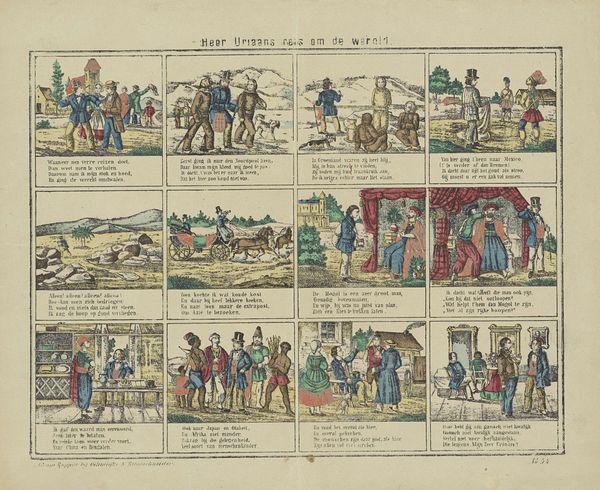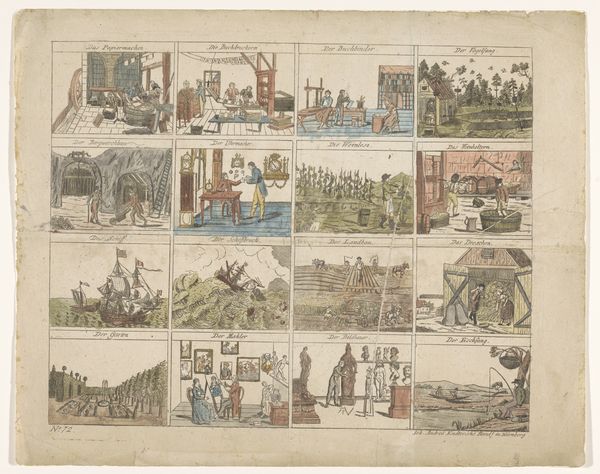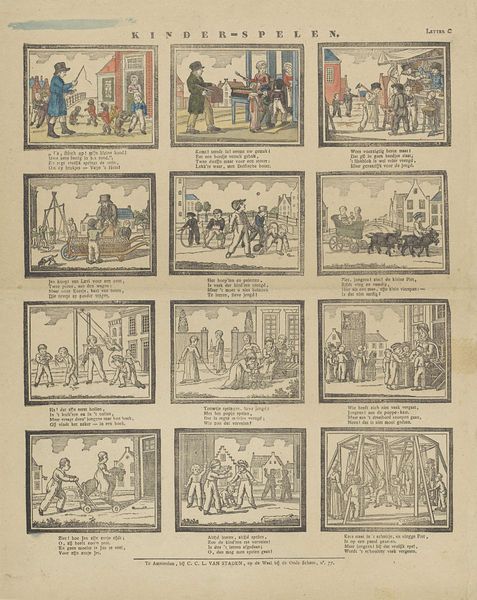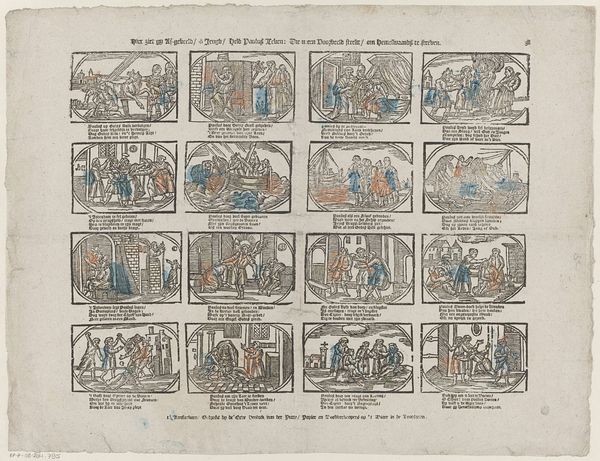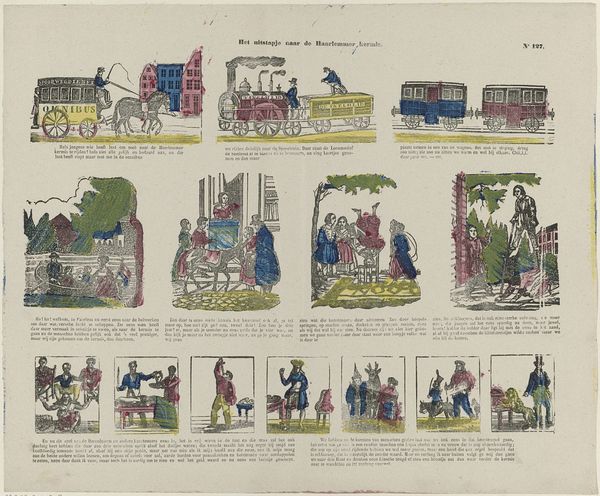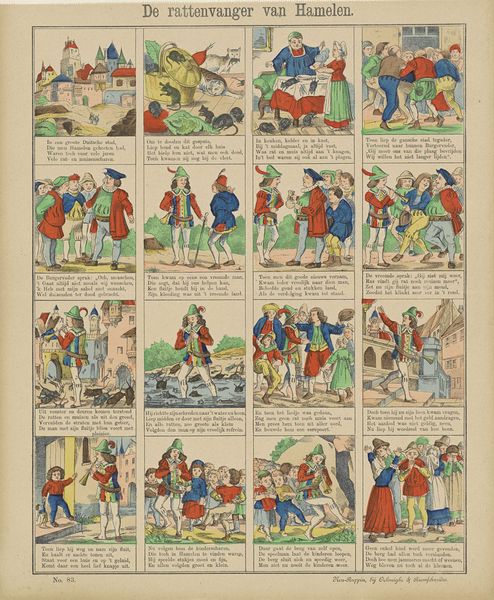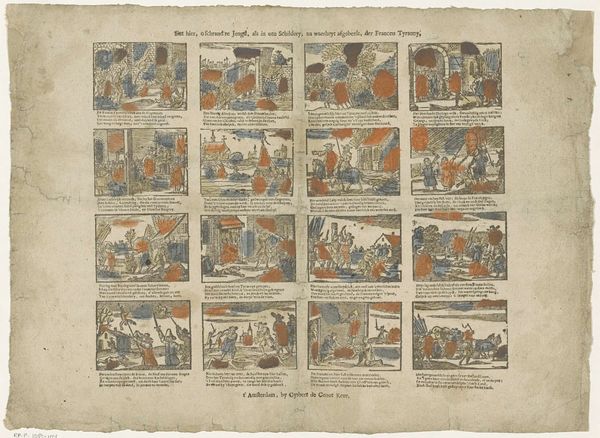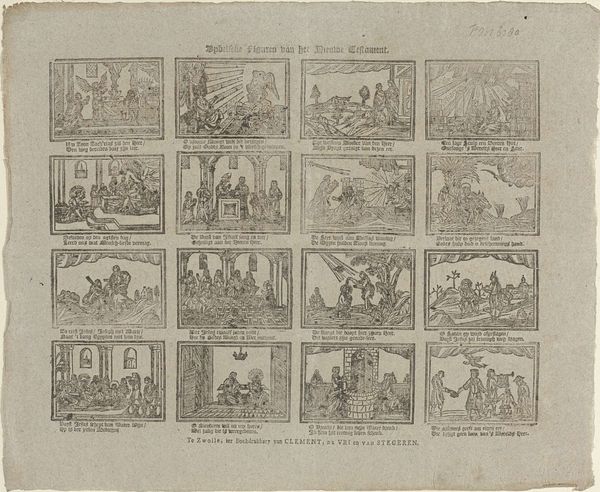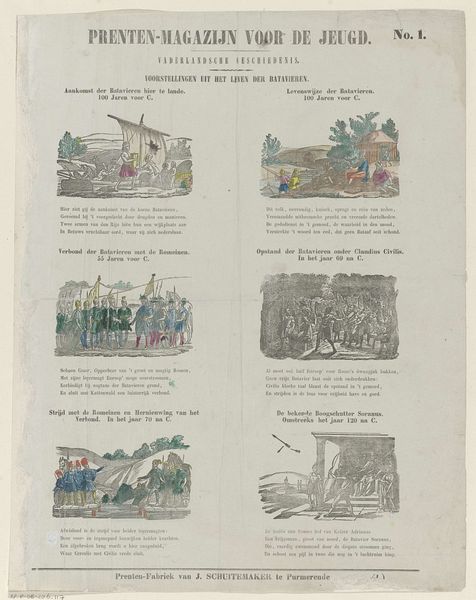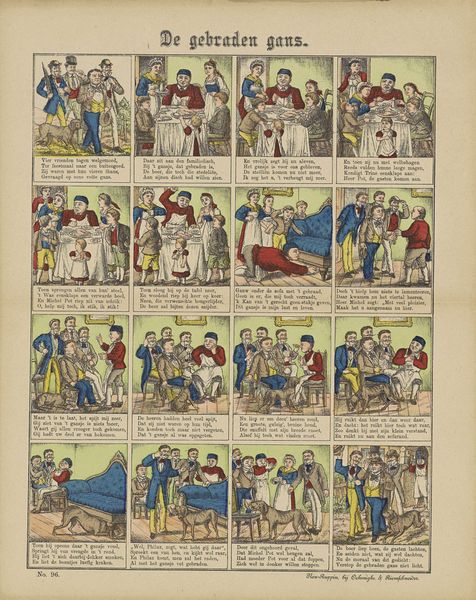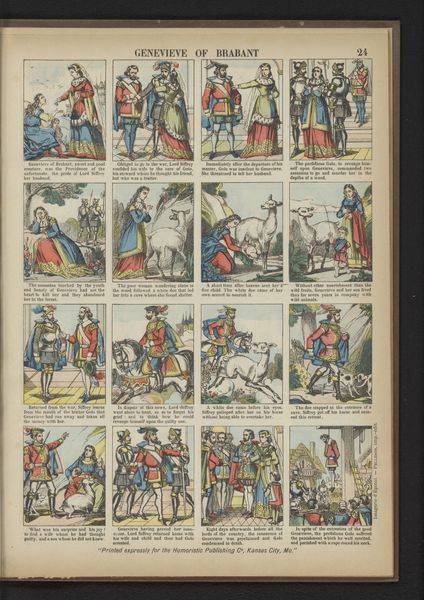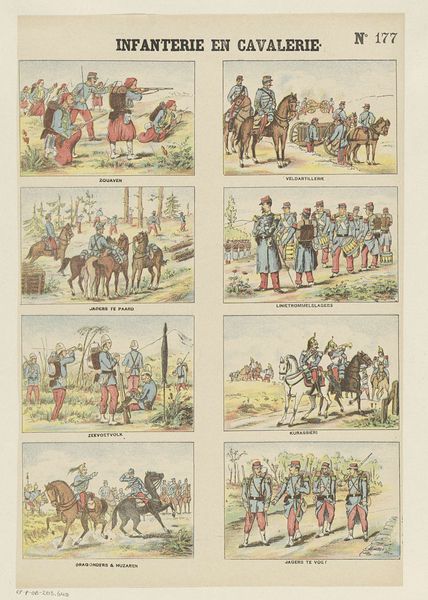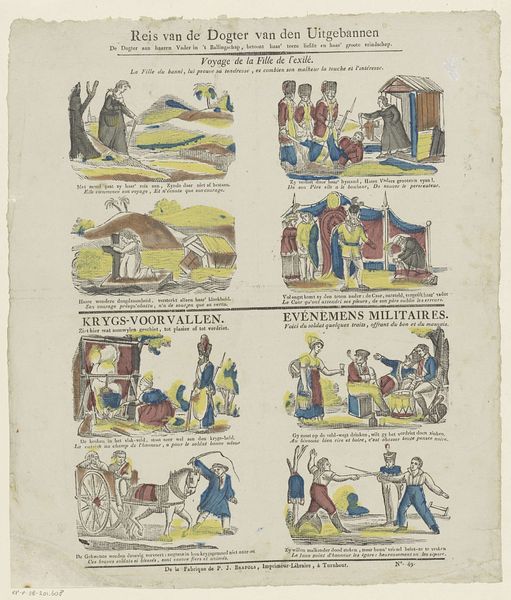
Blad met 9 voorstellingen van historische gebeurtenissen in de jaren 1813-1814 c. 1814
0:00
0:00
print, watercolor
#
water colours
#
narrative-art
# print
#
watercolor
#
romanticism
#
cityscape
#
watercolour illustration
#
genre-painting
#
history-painting
Dimensions: height 340 mm, width 440 mm, height 390 mm, width 495 mm
Copyright: Rijks Museum: Open Domain
Editor: So, this piece is called "Blad met 9 voorstellingen van historische gebeurtenissen in de jaren 1813-1814," or "Sheet with 9 depictions of historical events in the years 1813-1814." It’s attributed to an anonymous artist, dating back to about 1814. The Rijksmuseum classifies it as a print with watercolor. There’s a distinct narrative feel to it, almost like a storyboard of important historical moments. I’m struck by how orderly everything is; each event neatly boxed and labeled. What do you make of it? Curator: The organization into separate boxes is interesting. It reflects the Romantic era's preoccupation with structuring and categorizing the world. However, the inclusion of watercolors softens that rigidity and gives a personalized, almost sentimental touch to events that fundamentally reshaped Dutch identity and politics. How do you think the use of watercolor influences the reading of these events? Editor: It feels less like strict documentation and more like a… commemorative collection, perhaps? The colors are soft, and it’s reminiscent of folk art. Curator: Precisely. Consider the intended audience and its consumption context. Was this meant for private display, circulated as a political tool, or preserved as an accessible historical record? The Dutch flags prominently displayed speak to rising nationalism. Moreover, prints such as these played a crucial role in shaping public opinion and consolidating support for the new order, after years of Napoleonic rule. Editor: So, the seeming naivety might mask a powerful intent to unify and inspire through easily reproducible imagery? Curator: Exactly. The artist, though anonymous, engaged directly with the politics of imagery and its impact on the burgeoning national consciousness. It’s a seemingly simple artwork reflecting complex socio-political forces at play. Editor: That makes me look at it with fresh eyes. I see less folk art now and more clever visual propaganda. Curator: And hopefully, that’s why we are all here: to learn, revise our perspectives, and challenge conventional perceptions!
Comments
No comments
Be the first to comment and join the conversation on the ultimate creative platform.
